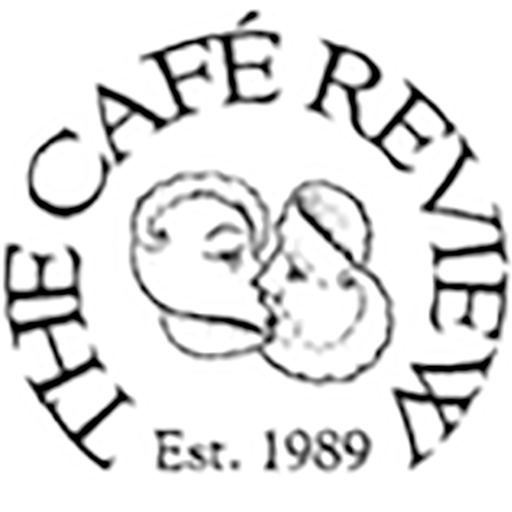The Penny Poet of Portsmouth
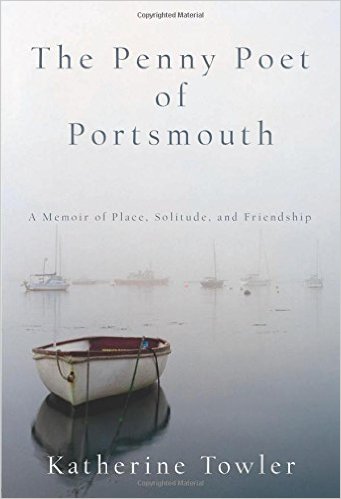
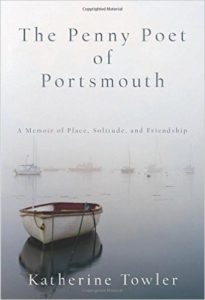 by Katherine Towler,
by Katherine Towler,
Counterpoint Press, 2016,
282 pages, paper, $16.95,
ISBN: 978-1-61902-712-1
Buy the Book
In the hands of the most gifted memoirist, (seemingly) ordinary lives are shaped into extraordinary lives; their subjects becoming through the telling of their stories larger than life — perhaps even mythical — when taken in full context, to include post-scripted entries made during those immediate years after the subject has passed away. You’ve heard of The Great American Novel? Well, this is The Great American Memoir, one that does not have to depend upon hyperbole and invention to make it a compelling read.
The Penny Poet of Portsmouth is not simply an amassed collection of anecdotes and stories about Robert Dunn as told by the author. Dunn is very much alive and speaking throughout the entire memoir in his own words via actual spoken dialogue between he and Towler, between the quotation marks. If but one sentence spoken by the man himself defines his destined purpose on this earth, it would be from page 200: “Without poetry, I do not see that life is worth living.” Towler’s relationship to Dunn could arguably be defined as the role of Zen student to Roshi master.
Towler manages also to reveal to us the full spectrum of how a writer must live in order to produce a lasting and valuable body of work, the daily balancing act of securing the critical alone time to write while having to accomplish the necessary mundane chores and still find the time for spouse, family, and community friendships. It should be stated here that Dunn, though an amazingly gifted poet and genuine fey presence in his own right, was not a saint. He could at times be very demanding and passive aggressive, and that in turn imposed an ongoing burden of guilt upon Towler, who was not only a friend but took on the role of errand runner and caretaker to Dunn during his last few years, as his health began to rapidly decline. From the notebooks of Robert Dunn:
The most hideous moments of the last judgment might be the
discovery that I had barely tolerated people who are much
better than I. It would be such a loss not to delight in the
differences. People are strong and weak, wise and foolish, here
and there.
Towler’s memoir (she is also a novelist and poet) is almost as much about the growing pains in the evolution of Portsmouth, New Hampshire, from circa 1990 to the present day, as it is about Robert Dunn, a recognizable fixture who could almost daily be seen strolling the downtown streets or sitting on a public bench. Dunn was a throwback, a modern day Basho, and a Luddite of sorts. Though physically diminutive, Dunn was a cerebral titan: “He was able to read French, German, Latin, and Greek, though he never studied any of these languages, except perhaps briefly, in school.” He composed each of his poems in his head over a period of two to three months and was able to recite all of his poems from memory. He committed a certain number of poems to paper in the form of small handmade books to sell for a penny to his friends (hence the book’s title) or to send off to literary magazines. One can only imagine how many poems died with the man, poems that were never captured on paper. Dunn was amazingly tough as well, having stoically survived through COPD, a collapsed lung, pneumonia, a broken hip, and congestive heart disease before passing away in 2008 at the age of 65. The Penny Poet of Portsmouth includes many excerpts from poems, complete poems, and notebook entries. Here is one poem in full, and typical of most all of Dunn’s poems, untitled:
Walking by day through the
Historic District you feel uneasy,
as though someone was trying to
tell you something, and that untrue.
But at night the whispers tell
how Flash Charley passed out right
in Pig Turd Alley, and what
Gimlet Alice said to the piano
player before she and everyone else
stopped being.
For those who wish to obtain and read a well-edited selection of Dunn’s published work, one need go no further than to pick up a copy of his 2016 Selected Poems, One Of Us Is Lost, from Hobblebush Books.
— Wayne Atherton
Literature for Nonhumans
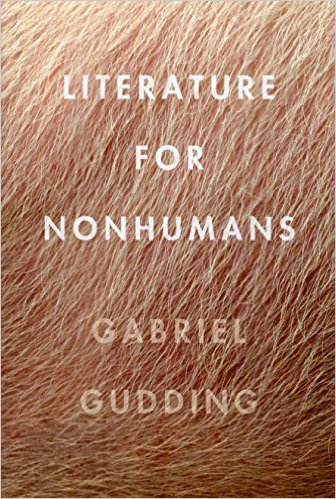
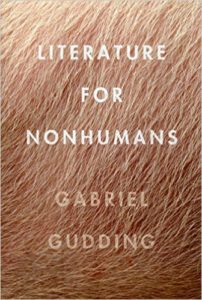 by Gabriel Gudding,
by Gabriel Gudding,
Ahsahta Press, 2015,
144 pages, paper, $22,
ISBN: 978-1-934103-63-0
Buy the Book
I was born in Chicago, “the great bovine city of the world,” “the historical city of the slaughterhouse,” as Gabriel Gudding aptly refers to it in Literature for Nonhumans. I was vaguely aware of Chicago’s, and all of Illinois’, slaughterhouse history, which Gudding examines shovel load upon encyclopedic shovel load, but like so many of us, I buried that knowledge deep in the back of the mind, where I conveniently don’t access it very often. That history is in the not-so-distant past; also in the not-so-distant past are my many years of vegan — and vegetarianism. Once the young man who stocked barbeque tempeh (“it’s not that bad, right!!!?!!?”) in
his parents’ refrigerator, now I count myself among the masses of lapsed vegetarians. There are many of us out there, plugging the holes in our conscience with organic sliders and free-range beef pups. As Gudding writes in his stunningly direct and spare Afterword, “the very thinkers who love animals and grow disturbed by their mass slaughter still eat them . . . still tell themselves it’s possible to humanely slaughter.”
I am among the guilty, and let it be said that I feel appropriately shamed. And yet, this is a poetry review. And Literature for Nonhumans is supposed to be a book of poetry, though it doesn’t always feel like it. I brought the book to the first day of my creative writing class, and we played “the novel game” with it, even though it isn’t a novel. For this game, I read the book’s back cover to the class, and then they tried to write the first sentence of that book. I’ll explain more of the game later in the review. However, after reading the book’s back cover to my class, I could tell I’d lost them. Eyeballs rolled back in heads; sighs escaped with obvious force. One young man laughed uproariously like he’d just heard a great joke: “Wait, wait . . . no, seriously . . . seriously . . . what did you just say? What’s this book about?”
What indeed is this book about? I told my student it was about slaughterhouses and animal rights. “Cool,” he said, but I could tell he wished it wasn’t about that. In retrospect my answer was rather stupidly reductive, but I chalked that up as yet another failed moment in the teaching of poetry. What can we do? This book is about many, many things. As the blurb on the back reads, it “links rivers, slaughterhouses, cars, buffalos, geology, churches, corn, defecation, piglet management, zombies, watches, sex. . . . ”
But mainly, it’s about nonhumans (meaning animals) and why we shouldn’t kill them. It all comes back to this refrain, though I couldn’t help but think that if, as the title suggests, this is supposed to be literature for nonhumans, wouldn’t my dog choose something a little more straightforward, a bit simpler, than this? Maybe something like . . . Hemingway? I could imagine my dog pointing to Gudding’s book in a bookstore, saying, “That’s a great book.” Then he’d choose All the Light We Cannot See.
Gudding is a seriously skilled poet. For example, take this passage from the section “Rivers for Animals”:
the sea is such an immense, babbling reservoir of urine . . .
sinking bags of organism, hull bottoms, dead children, ions,
and over it lolls the solar ovum banging through a park, the
south trees of a park, and there it goes getting onto a boat
under a river.
I love the galactic leap from “dead children” to “ions,” and then I really love the assonance that butts and smooths together “ions” and “over it,” and then the satisfying switch of the tongue to the roof of the mouth for the three “l”s in “lolls,” echoing that again in “solar,” and finally returning to the ghost of the assonance with that banging ovum. All ova will forever bang for me from now on.
Gudding’s prose (though I even feel forced to call it that) is far from prosaic, and I’d also not say it’s prose poetry, but more a poetic prose, wave upon wave, and it washes over you with the rhythmic lapping and sometimes crashing of history, economics, philosophy, and ethics: prose as a letting go of syntactic sense. “Rivers — their reason.” Poetry, its own reason.
But that’s not to say Gudding lacks a sense of humor in the midst of his vegan river rage. Body parts and functions litter the text, but I suppose one would have to find these funny, as I do, to consider it humor. I mean, how could you not think “Tart smell of farts over river water” isn’t a little bit funny? He also manages to use “anus” three times (unless I missed one), which prompts me to ask, how many times can one use “anus” in a book? Three times? That too much? Each one causes puckering.
But I have a feeling that this is exactly what Gudding is going for. He wants us attuned to our bodies so that we cannot so easily dismiss the bodies of our nonhuman brothers and sisters. Sometimes, he hits us with a moral slab of tofu: “We can feel comfort and love while eating a turkey while collectively denying the turkey’s wish for comfort and love, her desire to play and live.” Even with the syntax slightly off, the line hangs heavy, and feels less like poetry and more like polemics. That, indeed, is exactly the line this book walks. In fact, Gudding distances himself from a-ethical — ethically neutral — poetry that possesses a “performative indifference” to things like animal slaughter. Such conceptual poetry, as described on the Harriet Blog by K. Goldsmith and quoted by Gudding, “wouldn’t dare make the presumption that it has the power to affect the world for better or worse.” Indeed, that is the stuff that gives poetry a bad name.
It’s this sense of anguish, sometimes rage, that fills the book. When I finished reading it, I felt like I’d finished a novel, albeit one that moves primarily on one plane, ranging out widely to touch its topics. The book pulses with energy. In a highly entertaining and informative section about clocks and pocketwatches, Gudding writes:
Praised be the escapement, a device which through repetitive
mechanical motion regulates the running down of the
[e]motive powers. [reviewer’s creative emphasis]
This quote applies to Gudding’s entire book, which is a device to regulate and distribute the significant emotive powers at play. It feels measured in its passions because it needs to be. Otherwise, primal rage rarely sways a reader.
To end this review, I return to “the novel game.” As my students wrote their first line attempts, I copied down Gudding’s interestingly spaced first line (“The plan ets are old co l ore d platforms, almost porches.”). Then I collected all first lines, shuffled, and read them aloud, mixing in the real first line, and asked my students to vote. Surprisingly, no one voted for Gudding’s poetically unique opener; instead, a line about Hogwarts received the most votes. A professional hoop dancer in the front row, after hearing the real first line, said: “Yeah, I heard that one, and thought about it, but then I decided it was the worst of all.”
“No, no, wait, give it a chance,” I said to him. “It grows on you.”
— Jefferson Navicky
Bright Scythe, Selected Poems
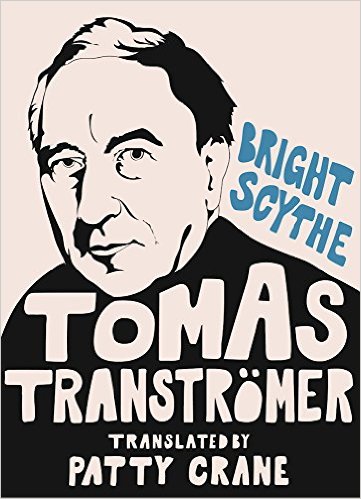
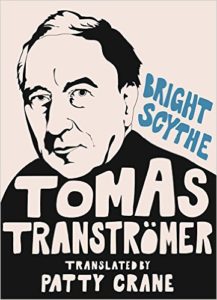 by Tomas Tranströmer,
by Tomas Tranströmer,
translated by Patty Crane,
Sarabande Books, 2015,
240 pages, paper,
ISBN: 1941411215
Buy the Book
Sweden’s great poet, the 2011 Nobel Prize winner, Tomas Tranströmer (1931–2015), produced a relatively spare and exquisite oeuvre over the course of his life. He published his first works at age 23, and proceeded, with great regularity, to produce numerous slim volumes of poems over the following fifty years. During that time, he balanced writing with his work as a psychologist and his family life. He also found time to become an accomplished pianist (playing concerts and recording a CD) and an amateur entomologist. In 1990, Tranströmer suffered a stroke that left him paralyzed on his right side and impaired his ability to speak. He continued writing, with great and increasing difficulty, publishing two more books of poems and a memoir, and trained himself to play piano with only his left hand.
Tranströmer is a poet of borders, boundaries, and thresholds. Always crossing and re-crossing, his was a restless intelligence that challenged supposed dichotomies of space and time, the conscious and unconscious, penetrating barriers and rendering them much more murky and mysterious than previously assumed and, in a sense, less clear and more gray, in the way we know life really is. The poems contain countless occurrences of dreaming and waking, thresholds between life and death, and boundary markers in the human and natural landscape: the edge of a forest, a half-open door, a window. Vehicles in the poems transgress and move through these boundaries: trains, cars, vans, and boats carry the speaker and reader through liminal spaces.
Translation, too, is a process that crosses spaces and challenges borders. And much like Tranströmer’s poems, it permits us, notes Edith Grossman in Why Translation Matters, “for a brief time to live outside our own skins, our own preconceptions and misconceptions. It expands and deepens our world, our consciousness, in countless, indescribable ways.” Translation allows us to experience the “otherness” within ourselves and in our own lives, not unlike the uncanny otherness that Tranströmer cultivated in his poems. And nowhere is that understanding more prevalent than for the translator herself. “I felt as if I were discovering a third language where English and Swedish intersected,” says Patty Crane, “And that language is mirrored in the poetry itself, where the boundaries between inner and outer landscapes — the psyche and the world — seem to shift, open and somehow merge.”
One of Tranströmer’s first poems, published in 17 Dikter (1954), is “Stones.” May Swenson translated the poem in 1972, Robin Fulton’s translation of Tranströmer’s entire body of work was first published in 1987 (and updated in 1997 and 2006 subsequently), and Patty Crane has again translated the poem here. The differences between these translations are not small, and have to do with when and how the action is occurring — verb tense — as much as with sentence construction or word choice. Swenson’s translation begins: “Stones that we have thrown I hear /falling, glass-clear through the years.” The opening line of Fulton’s translation begins, “The stones we threw I hear /fall, glass-clear though the years.” And Crane’s: “The stones we have thrown, I hear /fall, glass-clear through the year.” Fulton’s phrasing seems to direct the throwing of specific stones to a very specific time, whereas Swenson’s and Crane’s choice of the present perfect locate the action in the unspecified past. In all cases, the speaker continues to hear the stones “glass-clear,” a hybrid word chosen by all three translators, taken from the Swedish word glasklara, meaning “crystal clear.”
One of the real delights of the Crane translation is the accompaniment of the Swedish text on the facing page. It allows the reader to note the poem’s original shape and form, and to recognize relationships between the two languages. It allows us to see that the rhythm and repetition in the Swedish “trädtopp till trädtopp” and “bergstopp /till bergstopp” can be carried forward in the English “treetop to treetop” and “hilltop /to hilltop” (Fulton) or “mountain-top/to mountain-top” (Crane). Other significant differences in word choice between the translators of “Stones” include how the “confused actions of the moment” (Fulton and Crane), are “made mute” (Swenson) or “become silent” (Fulton) “in thinner air”; while they are “quieting /in air thinner than now’s” in Crane’s version. In a sense there is a difference in the agency of the air itself — air “made,” “becoming,” or “quieting” — that affects the movement and energetic arc of the poem. Crane’s deft solution allows the rhythm and tone established in the first lines to continue.
To my ear, Swenson’s is the most wooden of the three, incorporating what feel like too many excess articles and conjunctions — “in thinner air than that of the present” (my italics). But often this sort of complication belies a fidelity to the text, a direct translation. Crane’s translation seems to avoid this awkwardness while maintaining fidelity to the form. And while Fulton’s rendering of the poem falls more firmly in the past — and his translations are widely considered the most literal — Crane’s translation allows the poem to remain more temporally open, suspended in the in-between, through the use of gerunds — “quieting,” “gliding” — until the final, ending lines, “Where /all our deeds fall /glass-clear /to no ending /except ourselves.”
In longer, more complex poems, Crane’s translations remain spare and seem tightly cleaved to the form of the original Swedish. In the beautiful longer poem, “Vermeer,” Tranströmer imagines Johannes Vermeer’s studio shares a wall with the raucous world of a lively tavern; “No sheltered world . . . ” it begins. Crane’s translation moves more “comfortably” for the English reader, with phrases such as “The great explosion and the delayed trampling of rescuers, /boats swaggering at anchor . . . ” in contrast to Fulton’s: “The big explosion and the tramp of rescue arriving late, /the boats preening themselves on the straits. . . . ” Crane’s is less searching, and more directly conveys meaning. While the “making strange” — or of language may serve to engage a reader in productive tension, the contents of Tranströmer’s poems contain enough strangeness to keep us more than engaged: it is paradoxically the spareness and linguistic concision in his poems that lets us float in the wonder of his borderlands.
In “Vermeer,” the thin wall that separates the private painter from the noise of the world becomes one of the insurmountable walls in our lives; we must pass through it, yet with excruciating difficulty. And then, in the beautiful, transcendent last stanza, translated identically by both Fulton and Crane, he surprises us:
The clear sky has leaned against the wall.
It’s like a prayer to the emptiness.
And the emptiness turns its face to us
and whispers
“I am not empty, I am open.”
It is often said that a great poet deserves many translators. Tranströmer welcomed the differences his translators brought to the poems. When John Deane brazenly wrote Tranströmer regarding his impressions that previous translators — Robert Bly, May Swenson, and Robin Fulton, among others — were unsuccessful, the poet replied encouragingly and challenged him to do better. (See his translation of For the Living and the Dead.) It is my impression that through multiple translations, a community of readers learns a poet and his poems, deepening our understanding of the qualities of a unique intelligence. Through this collective project, the translations get better. Each new word choice, each grammatical moment challenged and fussed over, brings us closer to the meaning inhabiting the work. And yet, as with Tranströmer’s poems, the closer we approach, too, the further away we become. There is no “one text”; there are many texts overlapping in murky territories, these boundaries that so often falsely divide us that Tranströmer sought to transcend. Patty Crane worked closely with Tomas Tranströmer and his wife Monica for three years to craft the meaning in these carefully selected poems. Bright Scythe is an invaluable contribution to our understanding of Tranströmer’s concise and penetrating body of work.
— Julie Poitras Santos
The Truth Is We Are Perfect
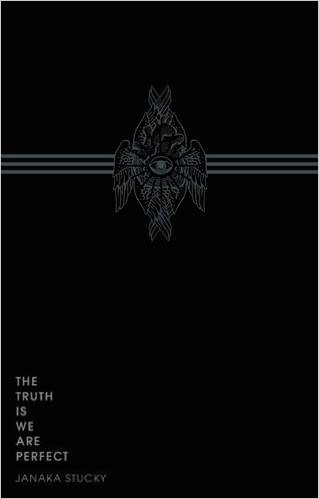
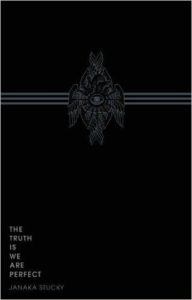 by Janaka Stucky,
by Janaka Stucky,
Third Man Books, 2015,
76 pages, paper, $15.95,
ISBN# 978-0-9913361-1-1
Buy this Book
“The Art of Loss Is a Lost Art,” reads the title of the third poem in Janaka Stucky’s volume of poetry, The Truth Is We Are Perfect, recently published by Third Man Books. Unlike Bishop’s infamous poem “One Art,” the narrator in Stucky’s collection does not concede to loss nor accept prescribed stages of grief. Instead, he approaches loss as a spiritual initiation through which one is broken open and transformed. More ecstatic dirge than “grief poetry,” the verses are tough, unpredictable, and spare.
The aforementioned poem* sets the tone for the first section of the book, which preludes and sets the tone for grief as does death itself. The poem opens with ritualistic images, the speaker vacillating between acceptance and denial:
Because I love a burning thing
I made my heart a field of fire
In this way I own nothing
Can lose nothing
The first stanza speaks to the impermanence of love and life itself; the image of fire in the chest is stunning in this metaphor. Reading the second stanza, with its “I own nothing / Can lose nothing,” I think, I’ve met this guy before; he wants to make himself insusceptible to hurt. But as the poem carries on, he can’t defend himself against the pain of love lost, admitting, “The mooncake you fed me remains / A ghost upon my tongue.” As the poem ends, we see just how vulnerable the speaker has become:
I make with my mouth
The hour of your arrival
Again and again
In my indefinite sleep
Many of the poems end with stark images that seem to encapsulate the felt sense of loss in the body yet remain stubbornly mysterious in their literal meaning, the effect of which can be quite awesome. For example, “I’m a Fool Who Are You” haunts with visceral images that give the reader just enough to feel the hurt:
When you begin my world buckles into
Jagged invisibles
Your skin glows like a sidewalk in the dark
Your mouth an alley with my murder inside
The longing and betrayal evoked in these images are at once wonderfully real and dreamlike. Certainly when one loses a loved one, a part of himself or herself is lost as well, but the author takes this cliché and exaggerates it to the extreme wherein loss means murder, a cutting off of the part that was connected to the loved one. By embodying the absence of the lover, the speaker is transformed and becomes something else entirely.
Similar tropes used less effectively in some of the shorter poems in the collection feel more like rough sketches than finished drafts. For instance, “Suicide Balm,” puzzles rather than intrigues:
Your lipstick strapped tightly to my chest
I run into a crowded restaurant
And plug it in
While I appreciate the imaginative figuring of lipstick as grenade, the unfortunate pun in the title does not help clarify what the speaker is hypothetically doing when he plugs in the tube of lipstick. Assuming that a clip must be removed from a grenade, rather than plugged in, in order to explode, is the speaker imagining himself blowing up the restaurant or plugging into an electrical socket?
Luckily, though, these missteps are the exception to the rule. The transfixing elegy in the last section of the book exonerates all previous sins. Because each poem is titled “Recreating a
Miraculous Object,” this group reads like a series but also feels like one long poem. The most surreal and wild section of the book, it contains short pithy poems, long chants, and non sequiturs. Whether reckoning his entrance into the world from the belly of a whale, chanting “I perish in amazement,” or bolding declaring, “I want to be a part of all / Things I am a part of,” Stucky ultimately asks us to wake up to our own broken hearts. In a culture in which we are given infinite means to numb out rather than engage, it is not only refreshing but pertinent for us to follow suit and begin to “unlearn ourselves.”
*Janaka Stucky reads his poem “The Art of Loss Is a Lost Art” at
https://soundcloud.com/thirdmanrecords/janaka-stucky-the-art-of-loss-is-a-lost-art-live-at-third-man-records.
— Kristen Stake

